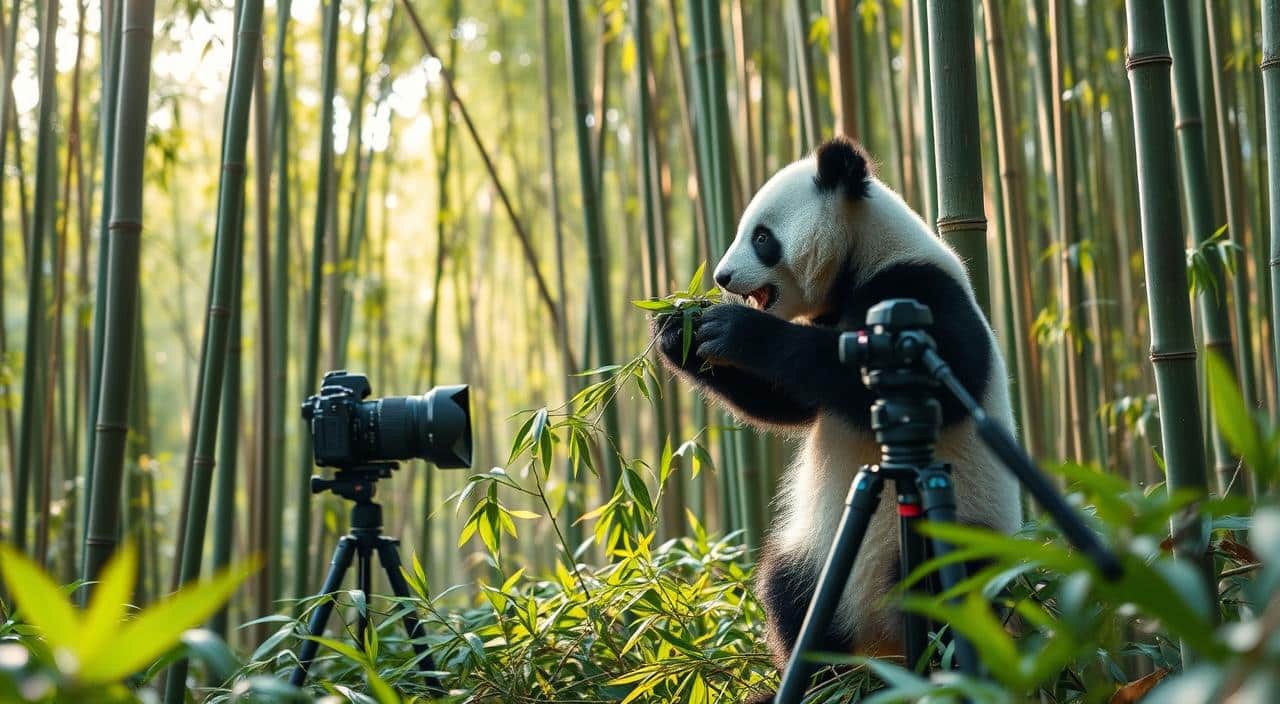wildlife Photography Equipment: Capturing stunning panda shots requires the right equipment. You’ll need powerful telephoto lenses and image stabilization technology. This article will guide you on the essential gear for amazing panda photos on your next adventure.
Key Takeaways
- Telephoto lenses with a focal length of at least 300mm are recommended for wildlife photography, with 400mm being ideal for full-frame cameras.
- Manufacturers are producing super telephoto lenses like 200-500mm and 150-600mm for greater reach.
- Lower f/number lenses are preferred for better low-light performance and attractive bokeh effect.
- Image stabilization technology is crucial for handheld shooting at slow shutter speeds.
- Weather-sealed construction ensures the durability of lenses in adverse field conditions.
Ample Telephoto Power
For wildlife photography, having enough telephoto power is key. Most experts say you need at least 300mm focal length. But for full-frame cameras, 400mm is better to get close to pandas.
The latest super telephoto lenses from Sony, Nikon, and Canon offer focal lengths from 200-500mm or 150-600mm. They provide impressive magnification power.
Maximum Focal Length
Longer focal lengths mean you need to think about maximum aperture and image stabilization. For example, the Nikkor AF-S 200-500mm f/5.6E ED VR lens costs $1,057 / £1,229 and weighs 2300g.
The Canon RF 100-400mm f/5.6-8 IS USM lens is priced at $599 / £650 and weighs only 635g. The Canon RF 800mm f/11 IS STM lens, with a fixed 800mm focal length, costs $999 / £1,099 and weighs 1260g.
Smaller and more affordable options like the Sigma 100-400mm f/5-6.3 DG DN OS Contemporary lens are also great. It’s priced at $849 / £699 and weighs 1140g. The Canon EF 100-400mm f/4.5-5.6L IS II USM lens costs $2,399 / from £1,670 (£2,599 general) and weighs 1640g.
When choosing a telephoto lens, consider focal length, maximum aperture, weight, and build quality. This ensures the best results for your panda photography adventures.
Shallow Depth of Field Capabilities
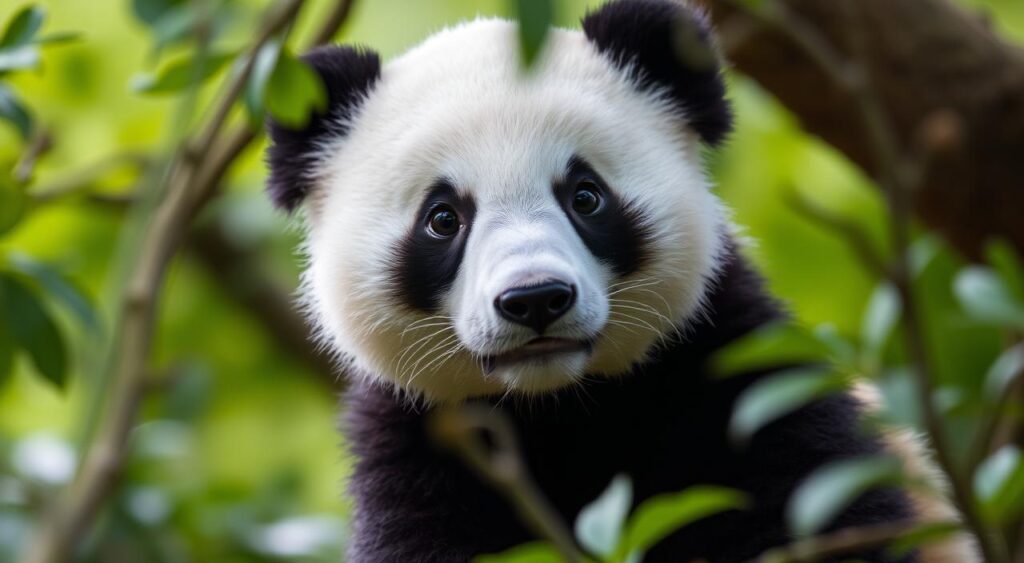
Wildlife photographers often look for lenses that can create a shallow depth of field. This “bokeh” effect, where the background is blurred, helps focus on the panda. It’s key for making your subject stand out.
The lens’s maximum aperture is crucial for this effect. You’ll want a lens that can open up to at least f/4 or f/5.6. This lets you blur the background and put your panda in the spotlight.
But, telephoto zoom lenses might not have the widest aperture. Many only go down to f/6.3 at the longest lengths. Knowing this trade-off is important when picking a lens for panda photos.
| Lens | Aperture Range | Depth of Field Impact |
|---|---|---|
| Nikon Z 180-600mm | f/5.6-6.3 | Narrower depth of field at longer focal lengths |
| Tamron 150-500mm | f/5-6.7 | Slightly wider depth of field compared to the Nikon |
| Canon 600mm and 800mm | f/11 | Significantly deeper depth of field, making background separation more challenging |
Understanding how aperture, focal length, and depth of field work together helps you choose the right lens. This ensures you get those amazing, blurred-background shots that make your photos pop.
“After shooting over 500 photos of grey seals, the photographer was happy with fewer than 5 images due to depth of field challenges.”
Image Stabilization: A Game-Changer
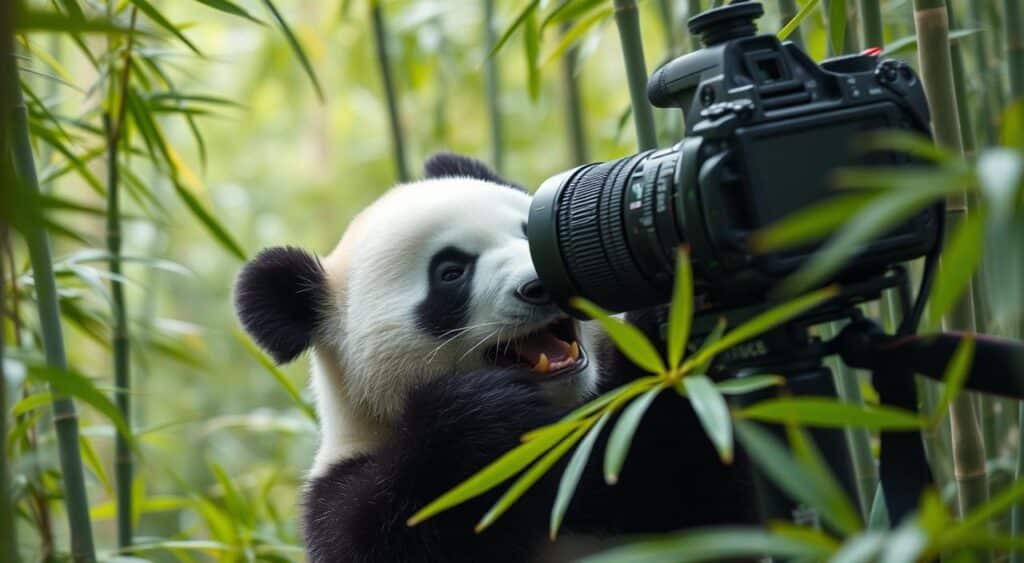
Capturing stunning wildlife shots, especially of elusive pandas, often requires shooting at slower shutter speeds in low-light conditions. Image stabilization, also known as vibration reduction, is a game-changer for wildlife photography.
Many modern telephoto lenses, such as the Canon RF 800mm F11 IS STM, have advanced image stabilization systems. They can provide up to 4-5 stops of shutter speed compensation. This lets you take sharp, blur-free panda images even when shooting handheld without a tripod. It gives you more flexibility and freedom of movement in the field.
The Canon RF 800mm F11 IS STM lens uses Canon’s Diffractive Optics (DO) technology. This keeps the lens lightweight and compact, making it easy to carry during your panda photography adventures. It also features a Stepping Motor (STM) for smooth and quiet autofocusing. This ensures minimal disturbance to your wildlife subjects.
Modern cameras like the Olympus offerings also boast impressive image stabilization capabilities. They have features like Pro-Capture, Bird AI, and Live ND, which are incredibly useful for wildlife photography. The Olympus 150-400mm M.ZUIKO Digital ED F4.5 TC1.25x IS PRO lens even includes a built-in teleconverter. This extends your reach without sacrificing image quality.
Advancements in image stabilization technology have revolutionized wildlife photography. They allow photographers to capture sharp, blur-free images of pandas and other elusive subjects. This is even in low-light conditions and without the need for a tripod. This flexibility and versatility are game-changers for those seeking to document the beauty and behavior of these captivating creatures.
Wildlife Photography Equipment
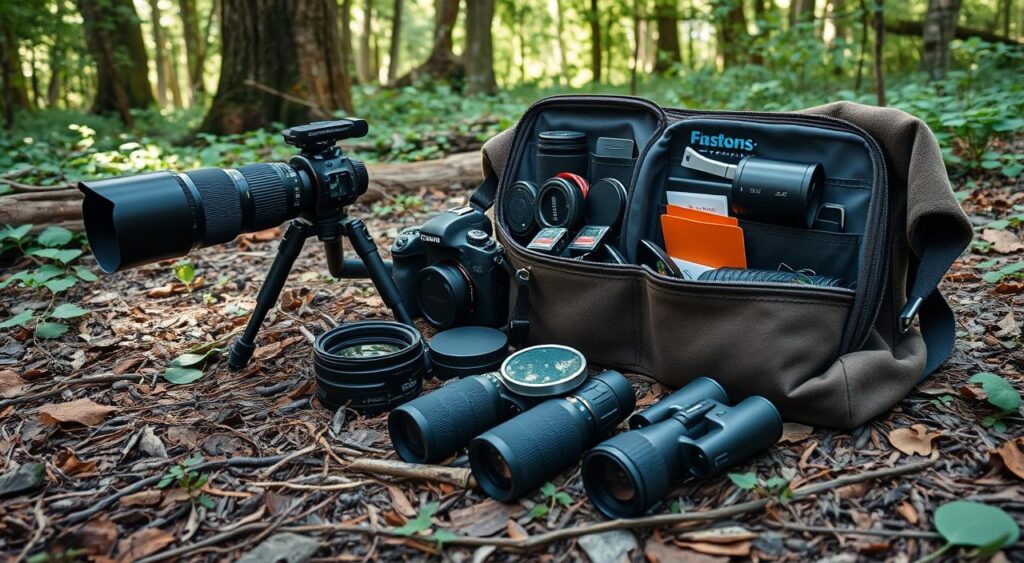
Build Quality
When you’re into wildlife photography, the quality of your gear matters a lot. Top brands like Nikon, Canon, and Sony make lenses that are weather-sealed and built with metal. They also come with strong accessories like lens hoods and tripod mounts.
This sturdy build doesn’t just protect your camera gear. It also helps keep its value high for resale later on.
These high-end lenses might cost more upfront. But for serious wildlife photographers, they’re worth it. They’re built to last, handling everything from extreme weather to dust and humidity.
| Feature | Benefit |
|---|---|
| Weather-sealed body and lenses | Protects gear in harsh outdoor conditions |
| Metal construction | Increased durability and resale value |
| Robust accessories (lens hoods, tripod mounts) | Enhances usability and protection for camera gear |
Choosing high-quality, weather-sealed camera gear with metal parts is smart for wildlife photographers. It keeps your equipment safe and lets you take amazing photos for years.
Versatile Focal Range
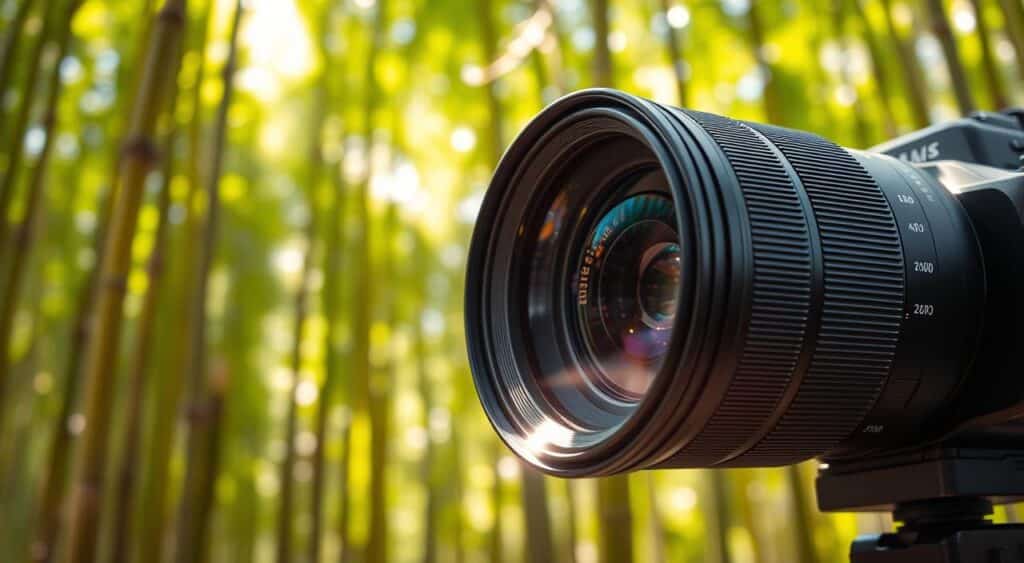
For wildlife photography, especially with elusive pandas, a versatile zoom lens is key. Lenses like 100-400mm, 100-500mm, 150-600mm, or 200-600mm are super flexible. They let you easily switch from wide shots to close-up portraits.
These “super zoom” lenses are great for capturing pandas in their natural setting and up close. You can quickly change your shot as the panda moves. This flexibility is essential for unpredictable wildlife.
The long end of these lenses is perfect for detailed panda shots. But zooming out is also crucial for showing their behavior and how they interact with their environment. This versatility changes the game in wildlife photography, letting you tell a complete story with your panda photos.
| Lens Model | Focal Range | Price (USD) |
|---|---|---|
| Sony FE 200-600mm f/5.6-6.3 G OSS | 200-600mm | $1,998 |
| Nikon NIKKOR Z 100-400mm f/4.5-5.6 VR S | 100-400mm | $2,697 |
| Canon RF 100-500mm f/4.5-7.1 L IS USM | 100-500mm | $2,899 |
| Tamron 150-500mm f/5-6.7 Di III VXD | 150-500mm | $1,199 |
Zoom lenses from Sony, Nikon, Canon, and Tamron offer a wide range of focal lengths and prices. They meet different needs and budgets for wildlife photographers. With these lenses, you can capture the full range of panda behaviors and environments.
Also Read: Best Wildlife Photography Courses for Panda and Animal Lovers
Conclusion
To get amazing panda photos, you need the right camera gear. Look for telephoto lenses and image stabilization. Also, choose camera equipment that’s tough and can handle the outdoors.
Think about what you need for your wildlife photography trips. A good kit lets you capture the beauty and actions of panda animals. With the right gear, your panda photos will be unforgettable.
Choose between a DSLR or mirrorless camera. Look for features like sensor size and autofocus points. Also, make sure it’s weather-sealed for outdoor use.
With the right lens, aperture, shutter speed, and ISO, you can capture the pandas’ movements and details. This will make your photos stand out.
FAQs
Q: What is the best lens for wildlife photography?
A: The best lenses for wildlife photography often include telephoto lenses, such as the Nikon AF-S Nikkor or a good zoom lens. These lenses allow photographers to capture distant subjects without disturbing them.
Q: Do I need a tripod for wildlife photography?
A: Yes, a tripod is essential for wildlife photography, especially when using long lenses. It provides stability and allows for clearer photographs, reducing camera shake.
Q: What should I look for in a camera bag for wildlife photography?
A: When choosing a camera bag for wildlife photography, look for a sturdy design that offers ample space for your camera gear, extra lenses, and accessories like binoculars and teleconverters. A waterproof bag is also a great option for outdoor adventures.
Q: Is a backpack necessary for carrying wildlife photography gear?
A: A backpack is highly recommended for wildlife photographers who need to carry a lot of equipment. It allows for hands-free movement and can comfortably hold all your photography essentials while hiking.
Q: What type of photographer benefits from using a gimbal head?
A: Bird photographers and wildlife photographers can greatly benefit from using a gimbal head. It provides smooth movement and allows for quick adjustments when tracking moving subjects.
Q: Are binoculars useful for wildlife photography?
A: Yes, binoculars are a valuable tool for wildlife photography as they help photographers locate and identify animals from a distance before setting up their camera gear to capture the photograph.
Q: What are teleconverters and how do they affect my lens?
A: Teleconverters are accessories that attach between your camera and lens to increase the effective focal length. They are great for wildlife photography as they allow you to use your existing lenses to photograph distant subjects without the need for a long lens.
Q: How can I choose the best wildlife photography kit?
A: To choose the best wildlife photography kit, consider your preferred subjects and shooting style. Essential wildlife photography gear typically includes a quality camera, a versatile lens (like a zoom lens or long lens), and additional items like a sturdy tripod, binoculars, and a gimbal head.
Q: What type of camera is best for capturing wildlife?
A: The best wildlife camera features a fast frame rate, good autofocus capabilities, and is compatible with a variety of lenses. Models like the Sony A1 or other DSLRs with high-performance specifications are often recommended for wildlife photography.

